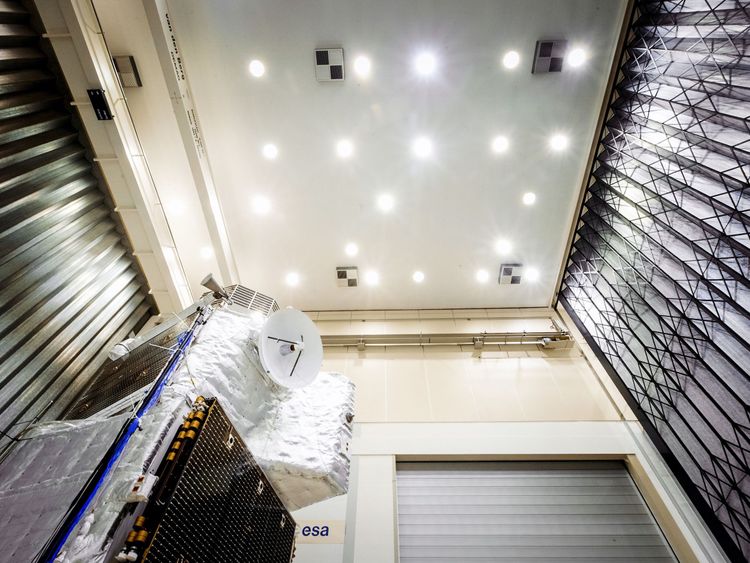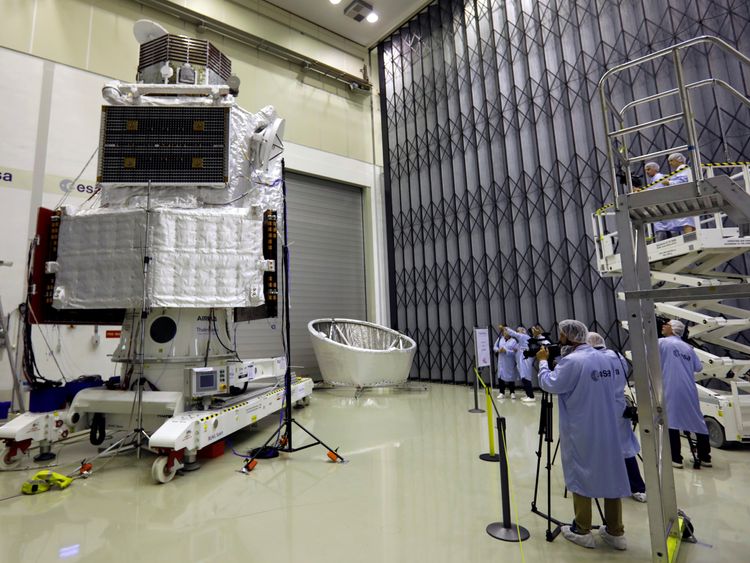Engineers are carrying out final checks on the Ariane 5 rocket before it launches Europe's most ambitious spacecraft.
Flight VA245 is due to lift off from the European Space Agency's (ESA) base in Kourou, French Guiana, in the early hours of Saturday.
It will take the BepiColombo spacecraft into orbit around Earth, the first stage of a five billion mile journey to Mercury.
The joint European and Japanese mission will study the structure and evolution of the closest planet to the Sun.
Previous NASA missions have suggested the planet has a molten core far larger than Earth's.
Intriguingly, despite daytime temperatures that exceed 400C, there is also ice in the permanent shadows of the poles and some craters that may well have been there for billions of years.
Leicester University is one of several UK institutions and companies involved in the mission.
It built an x-ray telescope that will map the composition of the surface.

Professor Emma Bunce, who led the university team, said the launch would be "nail-biting", but the mission would help scientists understand the "quirky" planet.
"It orbits treacherously close to the Sun which makes it a very dramatic, interesting environment," she told Sky News.
"It doesn't have an atmosphere so it is a rocky, crater covered planet, so it is very different to the other terrestrial planets like the Earth."
BepiColombo's journey towards the centre of the Solar System is hazardous because of the gravitational pull of the Sun.
To avoid fiery oblivion the spacecraft will attempt to lose speed in a series of manoeuvres around Venus and Mercury.
It will also use plasma ion thrusters firing against the direction of travel.
:: BepiColombo set to explore Mercury's mysteries
Liz Seward, from Airbus, which led the industrial consortium that built the European section of the spacecraft, said: "There are four thrusters which will fire two at a time.
"Their force is the same as a canary flapping its wings, but they will be on for so long that they are constantly decelerating.
"We have done a lot of calculations and we are really certain it is going to be ok."

The journey to Mercury will take seven years.
On arrival the spacecraft will shed its sunshield and then split into separate European and Japanese orbiters.
The ESA module will study the surface, while the Japan Aerospace Exploration Agency takes a separate orbit to study Mercury's magnetic field.
Scientists want to know why the planet appears to have lost it outer layers. It may be that they were stripped away by a massive collision with another object that also bumped Mercury into its current perilous position next to the Sun.
To survive the intense heat from sunshine 10 times stronger than on Earth the spacecraft has been covered in an insulating blanket made from 72 layers of materials, including aluminium, plastic and ceramic.
More from Science & Tech
It also has a metal rod, called "cold finger", that draws heat from the interior and dumps it into space through a huge radiator.
The measures should keep the internal electronics at 20C, despite the extreme external temperatures.
[contf] [contfnew] 
Sky News
[contfnewc] [contfnewc]







